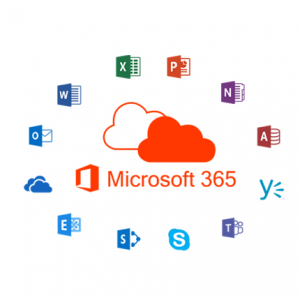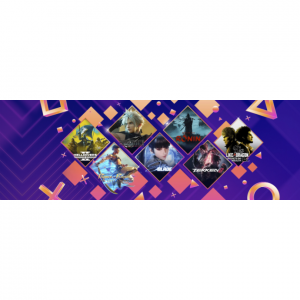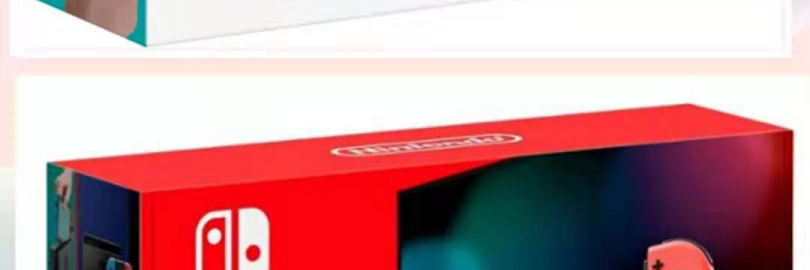
Nintendo Switch vs. Lite: 9 Differences You Should Know Before You Buy!
Nintendo Switch vs. Nintendo Switch Lite
Nintendo Switch
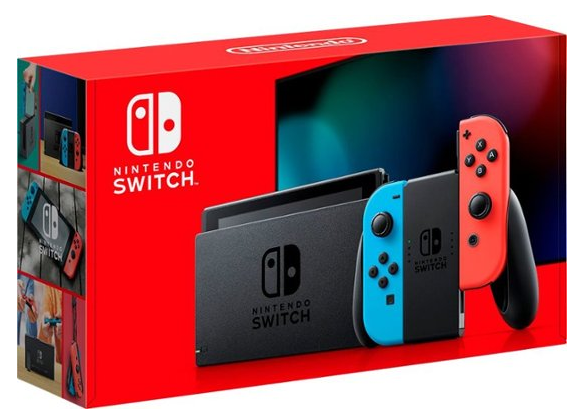
PROS:
Attractive, innovative design.
Excellent game library.
Solid build quality.
Joy-Cons feel comfortable to use in multiple configurations.
CONS:
Can't copy or transfer save files.
Short battery life.
Online service needs work.
Flimsy kickstand.
Nintendo Switch Lite

PROS:
Smaller and lighter than the Switch in handheld mode, with the same gaming experience.
Solid build.
Direction pad.
CONS:
No TV output or vibration.
Nintendo's cloud saves are still limited.
Where to Buy Nintendo Switch?
You can go Best Buy (Up to 0.5% Super Cash Back), GameStop (Up to 5% Super Cash Back), Amazon, and Walmart, and don't forget to sign up at Extrabux (What is Extrabux?) , then you can get super cashback from Extrabux! Sign-Up Bonus: Free to join it & get $20 welcome bonus!
Specs & Differences
| Nintendo Switch | Nintendo Switch Lite | |
| Prices | $299.99 | $199.99 |
Play Modes | 1. TV mod 2. Tabletop mode 3. Handheld mode | Handheld mode only |
| Compatible Games | All Nintendo Switch Games | Nintendo Switch games that support Handheld mode |
| Joy-Con Controllers | Joy-Con controllers include HD Rumble and IR Motion Camera. | System does not include HD Rumble or IR Motion Camera. |
Nintendo Switch Dock | Includes a Nintendo Switch dock and HDMI cable. Docking the system allows video output to a TV. | Not compatible with Nintendo Switch dock. Does not support output to a TV. Therefore, it does not come with a dock, HDMI cable or kickstand. |
| Dimensions | 4” high, 9.4” long, .55” deep (with Joy-Con attached) | 3.6” high, 8.2” long, .55” deep |
| Weight | Approximately .88 lbs with controllers attached | Approximately .61 lbs |
| Screen | 6.2" touch screen | 5.5" touch screen |
Battery Life | Model number: HAC-001 (product serial number starts with “XAW”) Approx. 2.5 to 6.5 hours*The battery life will depend on the games you play. For instance, the battery will last approximately 3 hours for The Legend of Zelda: Breath of the Wild. Model number: HAC-001(-01) (product serial number begins with “XKW”) Approximately 4.5 - 9 hours*The battery life will depend on the games you play. For instance, the battery will last approximately 5.5 hours for The Legend of Zelda: Breath of the Wild. | Model number: HDH-001 Approximately 3 - 7 hours*The battery life will depend on the games you play. For instance, the battery will last approximately 4 hours for The Legend of Zelda: Breath of the Wild. |
What's the Difference in Price?
The standard, more feature-rich Nintendo Switch is more expensive.
The standard Nintendo Switch system typically goes for $299.99, but it’s not uncommon for the price to dip lower during busy sales periods such as Prime Day and Black Friday. The standard system is available in dark gray or neon red and blue, with colorful special edition consoles coming out, too.
The Switch Lite is $199.99 and available in gray, turquoise, coral, and yellow. A special edition for Pokémon Sword and Shield was available shortly after launch, but it sold out a while ago.
Which Switch Works With My TV?
The Nintendo Switch earned its name because of the various ways it can be played: hooked up a TV or monitor with the included dock, sitting on a tabletop and played with wireless controllers, or in handheld mode, kind of like a classic Game Boy.
Unlike the Nintendo Switch, the Switch Lite is designed for handheld mode only. The Joy-Cons are built-in, and the console feels slightly lighter and smaller making it easier to take on the go and a better handheld for smaller children. The Switch Lite acts more as a step up from the Nintendo 3DS rather than a full alternative to the Nintendo Switch.
If you want to play Switch games on a TV, or have multiple people play together, get a standard Nintendo Switch. If you just want to play handheld, get a Switch Lite.
What Games Play on Switch VS. Switch Lite?
Nintendo is known for its wide and varied games library. It continues to grow every month with new games being released, from brand-new characters and adventures, to all-time classics such as Animal Crossing.
Many Nintendo Switch games showcase the true capability of the console. Games such as Super Mario Party have a variety of mini-games, where you can use the Joy-Con’s to complete certain actions. But there’s also games for the handheld player too! Pokémon is a classic that every console owner should have in their library, along with Mario Kart 8 and The Legend of Zelda. Whether you’re looking for new games to compliment your new console or want to expand your already existing library, there is plenty to discover. Nintendo Switch support all Nintendo Switch games.

But Nintendo Switch Lite can only play the games in the Nintendo Switch library that support handheld mode. For games that do not support handheld mode, players can wirelessly connect compatible controllers (sold separately) to Nintendo Switch Lite. If using separate Joy-Con controllers, users will need to have a device to recharge them, such as the Joy-Con Charging Grip.

What's the Difference in Joy-Cons?
The Nintendo Switch was built around the concept of Joy-Cons to enable it's switchability. They're simple, wand-like controllers with an analog stick, four face buttons, and two trigger buttons. They're packed full of motion sensors, too. They can be used wirelessly with the Switch, or attached to the sides of the tablet for handheld gaming functionality. The Switch comes with two Joy-Cons, along with a grip to use them like a conventional gamepad.
The Switch Lite is an all-in-one handheld, with the controls built into the device itself. You can still connect wireless controllers to it, but it's ultimately designed for one user as a gaming portable.
The Switch Lite's permanent controls make the system more stable and solid-feeling than the Switch in portable mode, but the history of the Joy-Cons raises an unfortunate possibility. Users have found that, over time, the analog stick on a Joy-Con can develop drift, slightly signalling a directional movement even when you aren't touching it. This is a known issue for Nintendo, and one that has prompted replacement Joy-Cons. That's easy for the regular Switch, but when the same types of controls are built into the Switch Lite you don't have quite as many options.
What's the Difference in Size and Screen Size?
The Nintendo Switch is larger and heavier than the Nintendo Switch Lite. With a pair Joy-Con controllers attached to a Switch, the system weighs 0.88 lbs, compared to the Switch Lite, which weighs 0.61 lbs.
The Nintendo Switch also has a slightly larger touch screen, measuring 6.2 inches diagonally. A Switch Lite screen is 5.5 inches.
What's the Difference in Battery Life?
Most of the hardware within the Switch and Switch Lite is identical, but one thing is different between the two–the battery. The HAC-001(-01) model of the Switch, specifically, has a 4310mAh battery, while the Switch Lite has a 3570mAh battery life. The increased battery is one of the major things that separates the (-01) model from the launch model of the Switch, which had a poor battery that didn’t last long at all.
The battery life depends on how resource-intensive the game you’re playing is, but the Switch can now last up to nine hours, while the Switch Lite can last up to seven hours. Of course, in practice, I’ve never seen either system last that long when actively playing games. I don’t have any hard numbers, but I’d say my Switch lasts about 5 hours playing a graphically intensive game in Handheld mode, and the Switch Lite will last about 3.5 hours.
What Colors Are Available?
Nintendo Switch: Grey, red/black/blue
Nintendo Switch Lite: Coral, turquoise, yellow or grey
If you’re buying a Nintendo Switch, you can choose from a variety of Joy-Con colors. The standard models come in a modest gray or in “neon” red and blue. Nintendo sells many other colors of Joy-Con controllers, including pink, green, purple, orange, yellow, and blue. Those extra Joy-Cons are sold separately, and typically cost $79.99 for a pair.

The matte-finish Switch Lite is available in coral (pink), turquoise, yellow or grey. Again special editions have been available, including a Pokémon version. They all look nice and are more understated than the bright colors of the Switch Joy-Cons.

Conclusion
These are both great little devices that can provide hours of entertainment on the go. Despite the higher price of the new Switch, we firmly believe that it is the better option for most gamers. You'll be able to use it in handheld mode, tabletop mode, and TV mode. It provides up to 50% more battery life than the original Switch, and perhaps most importantly, it works with multiplayer games and every Switch game out there.
The cheaper price of the Switch Lite makes the smaller device a tempting option. If you really think that you'll be using the system mainly on-the-go and for single-players games, then it's an excellent fit for you. As mentioned before, just remember that certain games won't be as convenient to play on the mini Switch.
Accessories to Buy
1. microSD card

We recommend buying the 128 GB SanDisk MicroSDXC card for Nintendo Switch to give yourself more room. That said, any brand-name microSD card with a speed class of at least U1 or better is fast enough for the Switch—Samsung’s Evo Select cards are a bit cheaper than the SanDisk and not much slower, and they’re what we’d recommend if you want a larger, 256 GB card. Because you’re not writing to the card much when you’re playing a game, you won’t notice the speed difference as much as you would with a smartphone or camera. If you see any 128 GB card for much less than $20 (or a 256 GB card for much less than $40), go ahead and buy that card instead.
2. Screen protector

A screen protector is a good investment for any device with a large touchscreen, and both Switch models have plastic screens that scratch surprisingly easily. We like amFilm’s Tempered Glass Screen Protectors for both the Switch and Switch Lite—they cover the entire Switch screen, they’re scratch resistant, and you get multiple screen protectors in each box just in case your first application attempt goes awry.
3. Nintendo Switch Pro Controller

The full-size Switch includes a caddy for both Joy-Cons, so you already have a decent full-size controller for when you’re playing on your TV. But if your Switch will be spending lots of time in the dock, the Switch Pro Controller is a wise investment. It’s more comfortable to hold for long periods of time, and anyone used to an Xbox or PlayStation gamepad will appreciate the full-size joysticks and buttons.
4. FASTSNAIL Grips Compatible with Nintendo Switch Joy-Con

Individual Joy-Cons are handy controllers to pass around when you’re playing multiplayer party games, but they can be cramped or hard to hold for extended periods of time. We like FastSnail’s Joy-Con Grips, which add handles and some extra size to each Joy-Con to make it more comfortable to hold. They’re inexpensive, they come in as many colors as the Joy-Cons themselves, and they represent a nice step up from the small plastic rails that Nintendo includes in the box.

Extrabux is an international cashback shopping site, offering up to 30% cashback from 10,000+ Stores!
Squarespace, SkinStore, MATCHESFASHION, The Wall Street Journal, NordVPN, Visible, Armani Exchange, Sam's Club, PUMA, AliExpress, Card Cash, NET-A-PORTER, Udacity, Udemy, Selfridges, LOOKFANTASTIC, Vimeo, Coach Outlet, lululemon, PrettyLittleThing, Booking.com, Ripley's Aquarium, iHerb, Groupon, etc.
Join to get $20 welcome bonus now! (How does Welcome Bonus work?)
Recommendation
-

Is Turkish Airlines Good for International Flights?
-
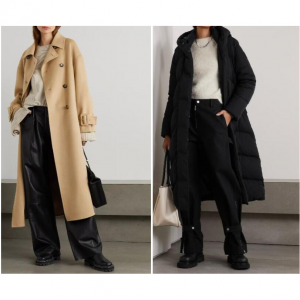
10 Best & Stylish Winter Coats for Women on NET-A-PORTER in 2025
-

Top & Best 12 Sneaker Apps/Websites for Raffles, Releases & Restocks in 2025
-

7 Best Gift Card Exchange Sites - Buy, Sell and Trade Discount Gift Card Safely and Instanly!
-

Top 9 Professional Skincare Brands for Licensed Estheticians 2025







